15 years one-stop China custom CNC machining parts factory
 530 |
Published by VMT at Nov 15 2021
530 |
Published by VMT at Nov 15 2021
CNC turning, also known as computer numerical control turning, is a machining process that utilizes computerized controls to rotate a workpiece while cutting tools remove material to achieve the desired shape. It is a highly precise and efficient method of manufacturing components with complex geometries, such as cylinders, cones, and threads.
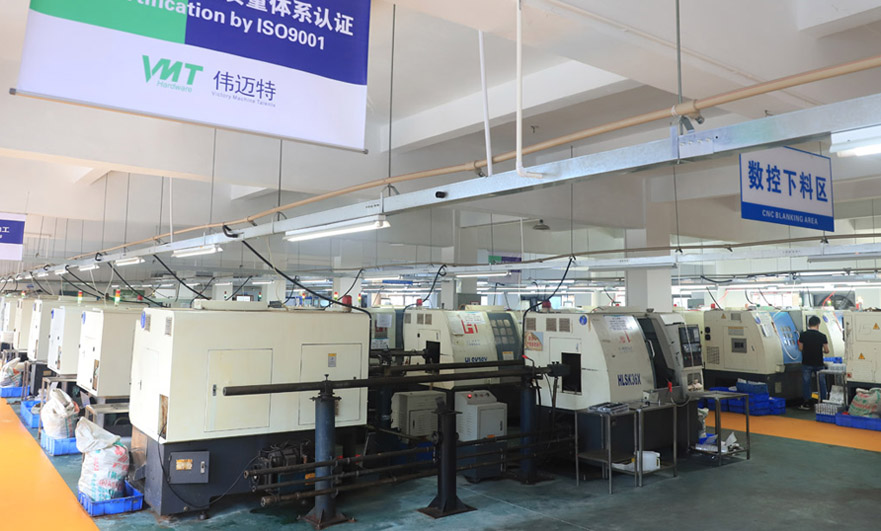
In today's fast-paced and competitive market, precision and efficiency are key factors for success in manufacturing. CNC turning plays a crucial role in meeting these demands by providing numerous benefits:
Accuracy and Consistency: CNC turning machines are programmed to perform precise movements, resulting in highly accurate and consistent parts. This eliminates human errors and ensures that every component matches the desired specifications.
Versatility: CNC turning can be applied to a wide range of materials, including metals, plastics, and composites. This versatility allows manufacturers to create various components for different industries, such as automotive, aerospace, medical, and electronics.
Complex Geometry: CNC turning machines can produce complex shapes and features that would be challenging or impossible to achieve manually. This opens up new possibilities for innovative designs and advanced engineering solutions.
Efficiency and Speed: With the automation and computerized control provided by CNC turning, the manufacturing process becomes faster and more efficient. This leads to increased productivity, shorter lead times, and ultimately, higher customer satisfaction.
Cost-Effectiveness: While the initial investment in CNC turning equipment may be higher compared to traditional machines, the long-term cost benefits are significant. The automation reduces labor costs, minimizes material waste, and optimizes production cycles, resulting in improved profitability.
Quality Assurance: CNC turning incorporates advanced technologies, such as automatic tool changers and real-time monitoring systems, which contribute to enhanced quality control. The ability to inspect and measure parts during the machining process ensures that any deviations from specifications can be detected and corrected promptly.
CNC turning, also known as computer numerical control turning, is a machining process that utilizes advanced technology and automated controls to create precision components. The principles underlying CNC turning include the following key aspects:
Computerized Controls: CNC turning machines are equipped with computerized controls that dictate the movement and actions of the cutting tools and workpiece. These controls are programmed with specific instructions to execute the desired machining operations accurately.
Workpiece Rotation: In CNC turning, the workpiece, typically a cylindrical or rod-shaped material, is secured and rotated on a spindle. This rotation allows the cutting tools to remove material from the workpiece to achieve the desired shape and dimensions.
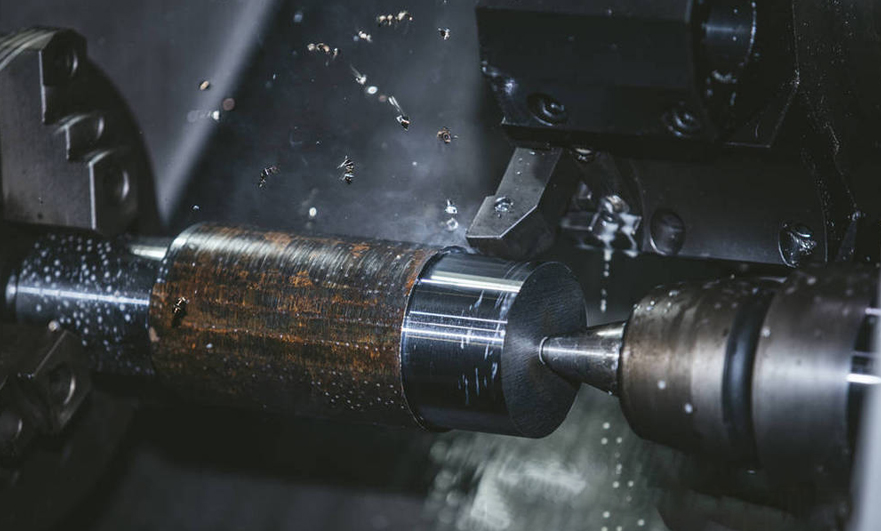
Cutting Tools: CNC turning employs various cutting tools, such as inserts, drills, and boring bars, which are selected based on the machining requirements. These tools are mounted on tool holders and positioned to engage with the rotating workpiece during the machining process.
Programming: CNC turning machines are programmed with the specific instructions necessary to perform the machining operations. This programming includes defining the tool paths, cutting speeds, feed rates, and other parameters required to shape the workpiece accurately.
Automated Machining: Once the program is loaded, the CNC turning machine carries out the machining process automatically. The computerized controls precisely position the cutting tools, control the tool movements, adjust the cutting parameters, and monitor the process in real-time.
Multi-Axis Capability: Advanced CNC turning machines often feature multi-axis capability, allowing for simultaneous movements and machining operations. This enables the creation of complex geometries and reduces the need for multiple setups.
Quality Control: CNC turning incorporates quality control measures to ensure the accuracy and precision of the machined components. This may involve in-process measurements using sensors or probes, as well as post-machining inspections using measurement tools like micrometers or coordinate measuring machines (CMMs).
The principles of CNC turning enable precise, efficient, and repeatable machining processes. By leveraging computerized controls and automation, CNC turning eliminates human errors, improves productivity, and enhances the overall quality of manufactured components.
CNC turning is a versatile machining process capable of producing various types of components with precision and efficiency. It is particularly well-suited for manufacturing the following types of parts:
Rotational Symmetric Components: CNC turning excels in producing components with rotational symmetry, such as cylindrical shapes, shafts, pins, and bushings. The ability to rotate the workpiece allows for precise machining along the axis, resulting in symmetrical and concentric features.
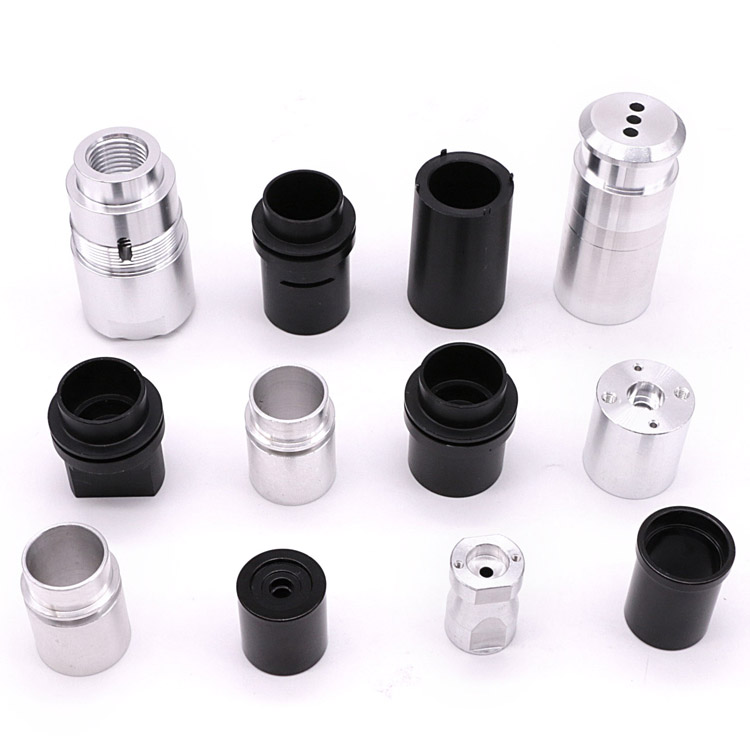
Threaded Components: CNC turning is commonly used to create threaded parts, including screws, bolts, and threaded inserts. The process allows for accurate thread profiles and pitch, ensuring proper fit and functionality.
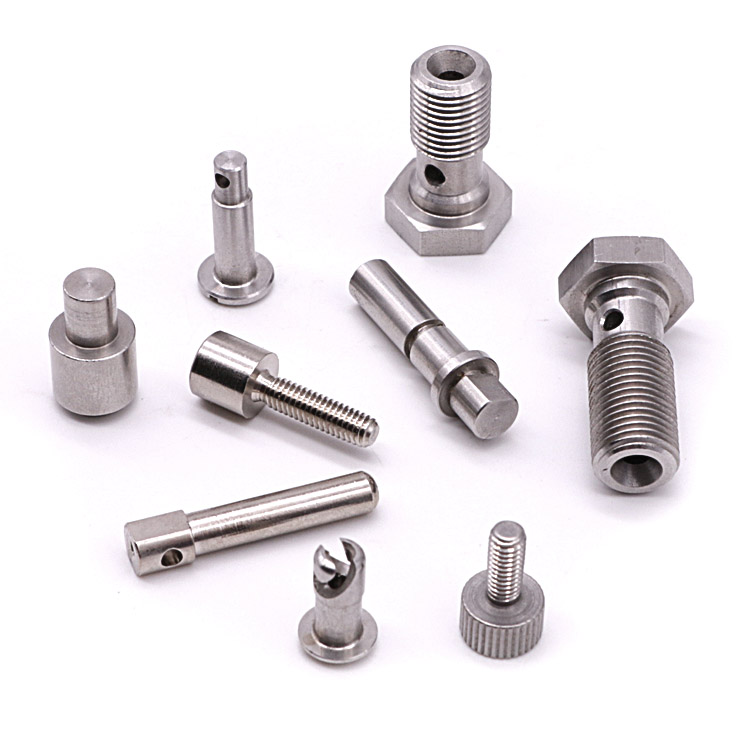
Complex Contoured Components: With advanced CNC turning machines featuring multi-axis capabilities, complex contoured components can be efficiently produced. These may include parts with intricate curves, profiles, or features such as slots, grooves, and pockets.
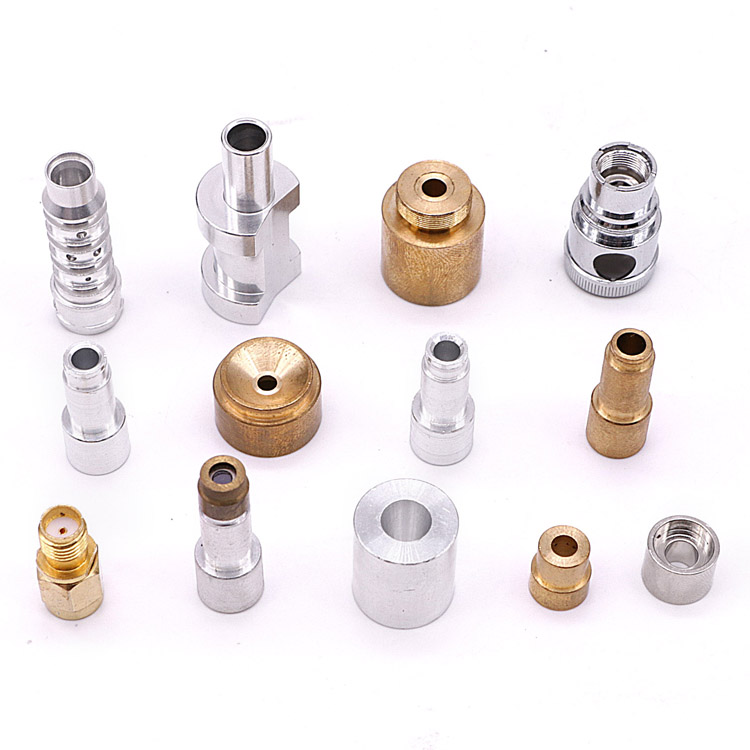
Precision Components: CNC turning is renowned for its ability to achieve high levels of precision. It is suitable for manufacturing components that require tight tolerances, such as bearings, spacers, and precision gears.
Prototype and Small Batch Production: CNC turning is an excellent choice for prototyping and small batch production runs. Its automation capabilities, coupled with the ability to produce identical components with minimal variation, make it ideal for rapid iteration and low-volume manufacturing.
Material Diversity: CNC turning can work with a wide range of materials, including metals (such as aluminum, steel, brass, and titanium), plastics, and composites. This versatility allows for the production of components across various industries, from automotive and aerospace to medical and consumer electronics.
It's important to note that the specific design requirements, complexity, and material properties of a component will determine its suitability for CNC turning. By leveraging the advantages of CNC turning, manufacturers can achieve precise, high-quality parts that meet their application's needs.
CNC turning, or computer numerical control turning, offers numerous advantages over traditional manual turning processes. These advantages include:
Precision and Accuracy: CNC turning machines are capable of achieving exceptional levels of precision and accuracy. The computerized controls ensure consistent and repeatable movements, resulting in components with tight tolerances and precise geometries.
Efficiency and Productivity: CNC turning machines operate with high efficiency, allowing for continuous production with minimal downtime. Automation eliminates the need for manual intervention between machining operations, reducing cycle times and increasing overall productivity.
Complex Geometries: CNC turning excels in machining components with complex geometries, such as intricate contours, grooves, and threads. The ability to program precise tool paths and multi-axis movements enables the creation of sophisticated designs that are challenging to achieve manually.
Consistency and Reproducibility: CNC turning ensures consistency in component production. Once a program is established, the same machining parameters can be applied repeatedly, resulting in identical components with minimal variation. This reproducibility is especially valuable for large-scale manufacturing or when producing parts that require precise interchangeability.
Wide Range of Materials: CNC turning can work with a wide variety of materials, including metals (such as steel, aluminum, and brass), plastics, and composites. This versatility allows manufacturers to produce components for diverse industries, accommodating different material requirements and applications.
Reduced Operator Skill Requirements: While skilled operators are still necessary to program and set up CNC turning machines, the actual machining process requires less manual dexterity and expertise compared to traditional turning methods. This reduces reliance on highly specialized operators and opens opportunities for broader workforce participation.
Improved Safety: CNC turning enhances safety in machining operations. With automated controls, operators can keep a safe distance from the cutting tools and workpiece, minimizing the risk of accidents or injuries. Additionally, built-in safety features and interlocks contribute to a safer working environment.
Flexibility and Customization: CNC turning machines offer flexibility in terms of design changes and customization. Modifications can be made to the machining program quickly, allowing for rapid prototyping or adjustments to accommodate specific customer requirements.
Waste Reduction: CNC turning optimizes material usage and reduces waste. Precise tool paths and optimized cutting strategies minimize material scrap and maximize the utilization of raw materials, resulting in cost savings and environmental benefits.
By harnessing these advantages, CNC turning provides manufacturers with enhanced capabilities, improved productivity, and the ability to produce high-quality components efficiently. The technology continues to evolve, offering new features and innovations that further enhance its performance in various industries.
While CNC turning offers numerous advantages, it also has certain limitations that should be considered. These limitations include:
Upfront Investment: Implementing CNC turning requires a significant upfront investment in machinery, software, and training. The cost of acquiring and maintaining CNC turning equipment, along with the associated software and tooling, can be substantial, especially for small or start-up businesses.
Complex Programming: Programming CNC turning machines can be complex and time-consuming, particularly for intricate components or advanced machining operations. Skilled programmers are required to develop accurate and efficient machining programs, and any errors in the programming can lead to costly mistakes or rework.
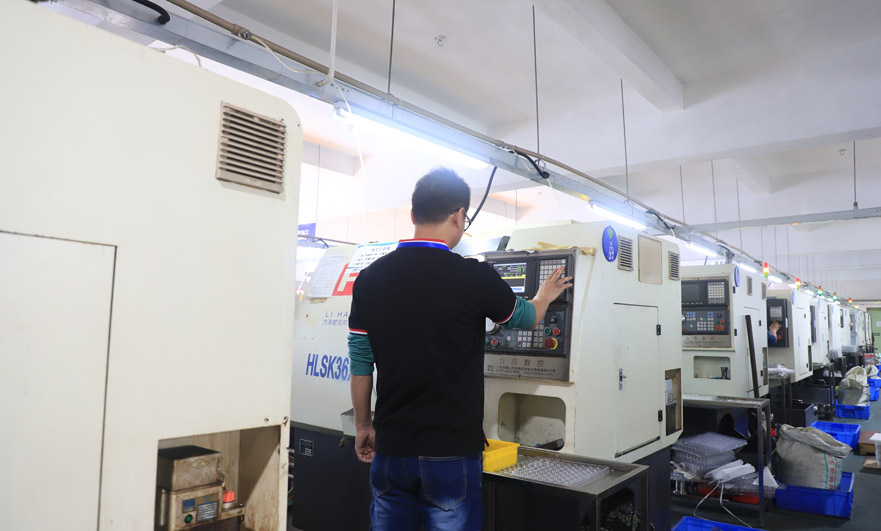
Limited Versatility for Non-Rotational Parts: CNC turning is primarily suitable for rotational or symmetrical parts. Machining non-rotational or irregularly shaped components can be challenging and may require additional setups or alternative machining processes.
Size Limitations: CNC turning machines have size limitations in terms of the maximum workpiece dimensions they can accommodate. Large or oversized components may exceed the capabilities of certain CNC turning machines, necessitating alternative machining methods.
Tooling Constraints: The selection and availability of suitable cutting tools can sometimes be limited, especially for specialized or non-standard applications. Finding the right tooling solutions to meet specific machining requirements may require additional research or sourcing.
Limited Surface Finish Options: Achieving certain surface finishes or textures may be challenging with CNC turning alone. Additional post-machining processes, such as grinding or polishing, may be required to achieve the desired surface characteristics.
Material Constraints: While CNC turning can work with a wide range of materials, certain exotic or extremely hard materials may pose challenges due to their properties, such as high heat resistance or hardness. Special tooling or machining techniques may be necessary to effectively work with such materials.
Machine Setup and Changeover Time: Setting up a CNC turning machine for a new job or changing over between different components can take time and impact production efficiency. The process involves securing the workpiece, aligning the tools, and loading the appropriate program, which can result in downtime and reduced productivity.
Maintenance and Servicing: CNC turning machines require regular maintenance and servicing to ensure optimal performance. This includes routine inspections, tooling replacements, and calibration, which may result in periodic machine downtime.
Despite these limitations, CNC turning remains a powerful and widely used machining process that offers significant advantages in terms of precision, efficiency, and productivity. By understanding these limitations and effectively managing them, manufacturers can make informed decisions about utilizing CNC turning for their specific applications.
CNC turning and CNC milling are two distinct machining processes that utilize computer numerical control (CNC) technology. While both processes are used for material removal and shaping, they differ in terms of the primary motion and tooling involved. Here are the key differences between CNC turning and CNC milling:
Primary Motion:
CNC Turning: In turning, the primary motion is the rotation of the workpiece. The workpiece is clamped in a chuck and rotates on a spindle. The cutting tool remains stationary, and it moves along the workpiece to remove material, creating cylindrical or contoured shapes.
CNC Milling: In milling, the primary motion is the rotation of the cutting tool. The cutting tool, typically a rotating multi-point cutter, moves across the workpiece in various directions (X, Y, and Z axes). The workpiece may be stationary or move in some cases.
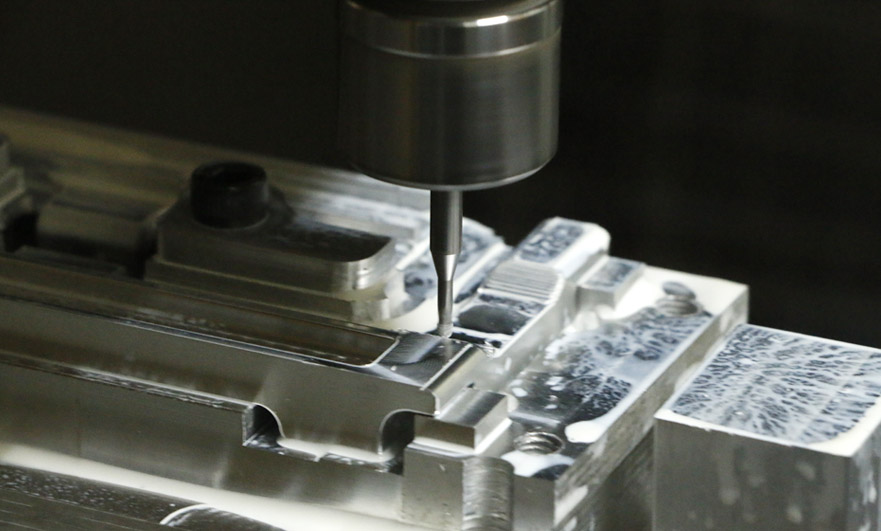
Tooling:
CNC Turning: Turning uses single-point cutting tools, such as inserts or drills, that are mounted on a tool post or turret. These tools remove material by making contact with the rotating workpiece at a specific angle.
CNC Milling: Milling employs a variety of cutting tools, including end mills, face mills, and drills, that have multiple cutting edges. These tools remove material by rotating and moving along different axes, allowing for the creation of a wide range of shapes and features.
Types of Geometries:
CNC Turning: Turning is primarily used to create cylindrical shapes, such as cylinders, cones, and fillets. It is ideal for producing rotational parts like shafts, pins, and bushings.
CNC Milling: Milling enables the creation of various complex geometries, including pockets, slots, holes, contours, and intricate 3D shapes. It is well-suited for producing components with detailed features, such as molds, dies, and mechanical parts.
Applications:
CNC Turning: Turning is commonly used in applications where rotational symmetry is required, such as in the production of shafts, pulleys, valves, and flanges. It is also suitable for producing prototypes, small to medium-sized components, and parts with high precision.
CNC Milling: Milling is versatile and finds applications in a wide range of industries. It is used for producing parts with complex geometries, such as automotive components, aerospace parts, molds, and intricate machine components.
Both CNC turning and CNC milling have their unique advantages and are often used together in manufacturing processes, depending on the specific requirements of the components. The choice between turning and milling depends on factors such as the desired part geometry, material properties, production volume, and machining complexity.
CNC lathes, or computer numerical control lathes, come in various configurations to accommodate different machining requirements. Some of the common types of CNC lathes include:
2-Axis CNC Lathes: 2-axis CNC lathes are the most basic type and operate in two axes: X-axis and Z-axis. These lathes are suitable for simple turning operations and are commonly used for cylindrical shaping, facing, and threading.
Multi-Axis CNC Lathes: Multi-axis CNC lathes have additional axes of movement, typically including a C-axis for spindle rotation and live tooling capabilities. These lathes can perform complex operations, such as milling, drilling, and tapping, in addition to traditional turning.
Swiss-Type CNC Lathes: Swiss-type CNC lathes, also known as Swiss screw machines, are designed for high-precision and high-volume production of small parts. They feature a guide bushing that provides excellent support for long and slender workpieces, enabling precise machining with tight tolerances.
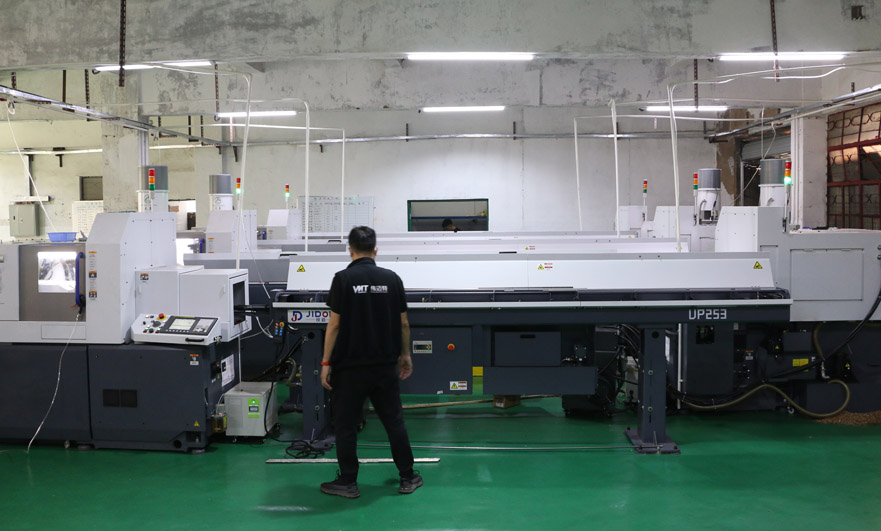
Vertical CNC Lathes: Vertical CNC lathes have a vertically oriented spindle and workpiece arrangement. These lathes are often used for heavy-duty machining of large, heavy workpieces, such as discs, rings, and cylindrical components requiring deep cuts.
Horizontal CNC Lathes: Horizontal CNC lathes have a horizontally oriented spindle and workpiece arrangement. They are versatile machines suitable for a wide range of turning operations and are commonly used in industries such as automotive, aerospace, and general manufacturing.
Slant Bed CNC Lathes: Slant bed CNC lathes feature a slanted bed design that offers better chip control and improved ergonomics. The slanted bed allows for easy chip removal, enhances rigidity, and improves access to the workpiece, resulting in enhanced machining performance and operator convenience.
Turret CNC Lathes: Turret CNC lathes are equipped with a tool turret that holds multiple cutting tools. This allows for quick tool changes and reduces the time required for tool setup. Turret lathes are ideal for complex machining operations that involve multiple tooling requirements.
Combination CNC Lathes: Combination CNC lathes, also known as mill-turn machines, combine the capabilities of a lathe and a machining center. These machines offer both turning and milling operations in a single setup, allowing for the complete machining of complex parts without the need for additional equipment.
Gang-Tool CNC Lathes: Gang-tool CNC lathes feature a gang-style tooling setup, where multiple tools are mounted on a single tool block or holder. This configuration enables simultaneous machining with different tools, improving productivity for small and simple components.
Each type of CNC lathe offers unique advantages and is designed to meet specific machining requirements. The selection of the appropriate CNC lathe depends on factors such as the complexity of the parts, production volume, tolerances, material characteristics, and desired machining capabilities. Manufacturers can choose the most suitable CNC lathe based on their specific application needs.
CNC turning encompasses various techniques and processes that can be employed to achieve specific machining goals. Some of the different CNC turning techniques include:
Conventional Turning: Conventional turning is the most basic and widely used CNC turning technique. It involves machining the workpiece with a single-point cutting tool while the workpiece rotates on the spindle. Conventional turning is suitable for producing cylindrical shapes, facing operations, and simple profiles.
Facing and OD Turning: Facing and OD (Outside Diameter) turning involve machining the end face and outer diameter of the workpiece, respectively. These techniques are commonly used to achieve precise flatness, perpendicularity, and concentricity requirements.
ID Turning: ID (Inside Diameter) turning involves machining the inner diameter of a workpiece, such as creating bores or cylindrical cavities. Specialized cutting tools, such as boring bars or ID grooving tools, are used to achieve accurate dimensions and surface finishes.
Taper Turning: Taper turning is used to create tapered surfaces, such as conical shapes or chamfers, on the workpiece. It requires precise control of the tool movement and feed rate to achieve the desired taper angle.
Threading: Threading is a common CNC turning technique used to create external or internal threads on the workpiece. It involves synchronized movements of the cutting tool and workpiece to produce accurate thread profiles and pitch.
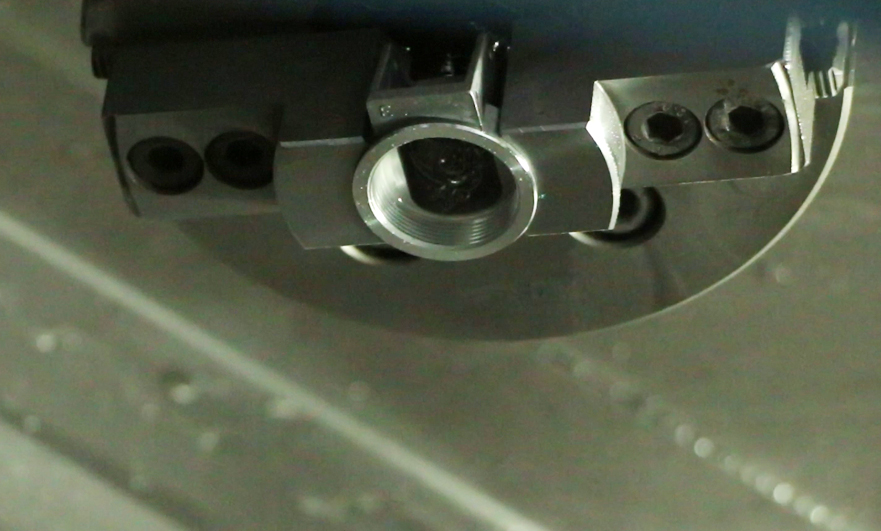
Grooving and Parting Off: Grooving and parting off techniques are used to create grooves or separate the workpiece into multiple parts. These operations require specialized cutting tools, such as grooving inserts or parting blades, to achieve clean and precise cuts.
Knurling: Knurling is a technique used to create a textured pattern on the surface of the workpiece for improved grip or aesthetic purposes. Knurling tools with patterned wheels or rollers are pressed against the rotating workpiece to create the desired texture.
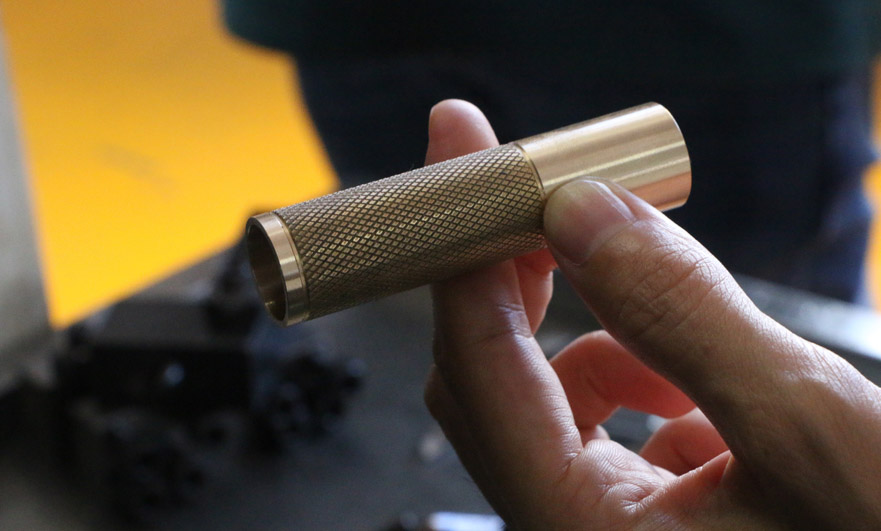
Thread Milling: Thread milling is an alternative to traditional threading techniques where a milling cutter is used to produce threads. This technique allows for the machining of various thread sizes and pitches with a single tool, offering versatility and reducing tooling costs.
Profile Machining: Profile machining involves the creation of complex profiles or contours on the workpiece. This technique utilizes specialized cutting tools and multi-axis movements to achieve intricate shapes and designs.
High-Speed Machining: High-speed machining utilizes advanced CNC turning machines with high spindle speeds and optimized cutting parameters to achieve rapid material removal rates and reduced cycle times. This technique is particularly beneficial for large-scale production or time-critical applications.
These are just a few examples of the different CNC turning techniques available. The selection of the appropriate technique depends on the specific requirements of the component being machined, including its geometry, dimensions, surface finish, and material properties. Skilled programmers and operators can utilize these techniques to optimize the CNC turning process and achieve the desired results efficiently.
CNC turning is a versatile machining process that can be applied to a wide range of materials. Some of the materials that are commonly suitable for CNC turning include:
CNC turning is highly compatible with various metals, including:
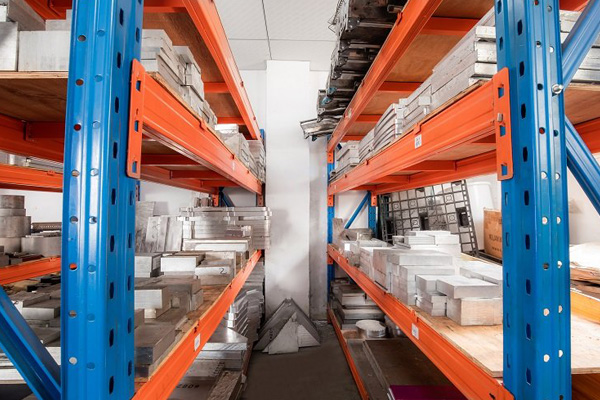
Steel: Carbon steel, alloy steel, stainless steel, tool steel, etc.
Aluminum: Aluminum alloys, such as 6061, 7075, and cast aluminum.
Brass: Commonly used for components requiring good conductivity, corrosion resistance, and an attractive appearance.
Copper: Offers excellent electrical and thermal conductivity, making it suitable for electrical and plumbing applications.
Titanium: Known for its high strength, low weight, and exceptional corrosion resistance, making it ideal for aerospace and medical components.
Nickel Alloys: Inconel, Hastelloy, and Monel are examples of nickel alloys with excellent high-temperature and corrosion-resistant properties.
Cast Iron: Provides good wear resistance and damping capabilities, commonly used for heavy-duty applications.
CNC turning is well-suited for machining various plastics, including:
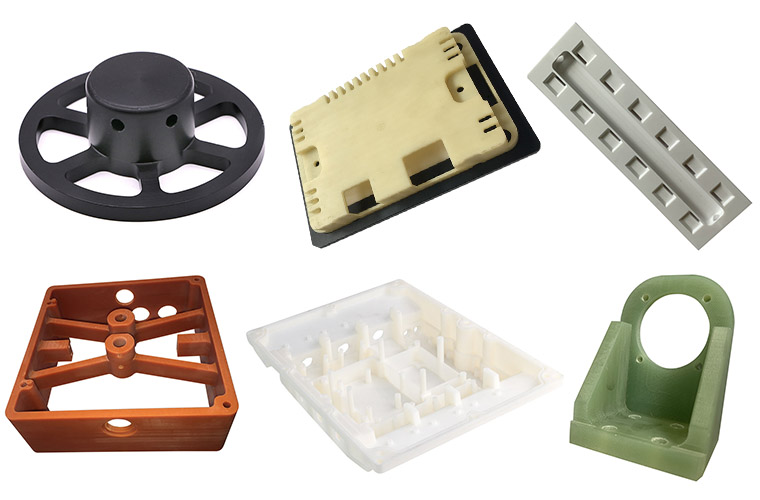
Acrylic: Known for its transparency, impact resistance, and versatility in applications like signage and displays.
Nylon: Offers good strength, wear resistance, and low friction properties, making it suitable for gears, bushings, and bearings.
Polyethylene: Exhibits excellent chemical resistance and is commonly used in applications involving containers, pipes, and liners.
Polypropylene: Known for its chemical resistance, low density, and thermal stability, commonly used in packaging, automotive, and medical industries.
Delrin (Acetal): Provides good dimensional stability, low friction, and excellent machinability, often used for precision parts and gears.
CNC turning can also be applied to composite materials, such as:
Carbon Fiber: Offers high strength-to-weight ratio, rigidity, and resistance to heat and chemicals, commonly used in aerospace, automotive, and sporting goods industries.
Fiberglass: Known for its strength, electrical insulation properties, and corrosion resistance, often used in construction, marine, and automotive applications.
It's important to note that the machinability and specific parameters may vary depending on the grade and composition of the materials. Additionally, certain materials, such as hardened steels or superalloys, may require specialized tooling, cutting techniques, or additional heat treatment processes.
Manufacturers should consult material suppliers, tooling manufacturers, and machining experts to determine the most suitable cutting parameters, tooling options, and machining strategies for specific materials.
CNC turning, with its ability to efficiently and accurately shape cylindrical and rotational parts, finds numerous applications across various industries. Some of the common applications of CNC turning include:
Automotive Industry: CNC turning is widely used in the automotive industry for manufacturing various components such as shafts, pistons, cylinders, gears, and brake system parts. It enables precise machining of critical engine and transmission components that require high accuracy and tight tolerances.
Aerospace Industry: CNC turning plays a crucial role in the aerospace industry, producing components like turbine shafts, landing gear parts, engine components, and flight control system parts. Its ability to handle high-strength materials and achieve intricate geometries is essential for aerospace applications that demand precision and reliability.
Medical Equipment: CNC turning is extensively used in the production of medical equipment and devices. It is employed to manufacture components like surgical instruments, implants, prosthetics, and dental parts. The high precision and quality achieved through CNC turning ensure proper fit, functionality, and biocompatibility in medical applications.
Electronics and Electrical Industry: CNC turning is utilized for producing electrical connectors, terminals, and other precision components used in the electronics industry. It allows for efficient mass production of small-sized parts with tight tolerances, ensuring reliability and consistency in electrical and electronic devices.
Industrial Machinery: CNC turning is an essential process in the production of various industrial machinery components, including shafts, pulleys, couplings, and bushings. It enables the creation of accurate and durable parts that are critical for the smooth operation of machinery in manufacturing plants and other industrial settings.
Tool and Die Making: CNC turning is commonly employed in tool and die making, where it is used to produce molds, dies, and tooling inserts. It facilitates the creation of complex shapes and contours required for manufacturing custom tools, ensuring precise and repeatable results in the production process.
General Manufacturing: CNC turning is widely applied in general manufacturing for producing a wide range of components, such as fasteners, fittings, valves, and plumbing fixtures. Its versatility, speed, and accuracy make it a cost-effective solution for meeting the machining needs of diverse industries.
The applications of CNC turning are not limited to the industries mentioned above. It is also utilized in sectors like energy, agriculture, consumer goods, and many more. CNC turning offers manufacturers the ability to produce high-quality parts with efficiency, consistency, and precision, meeting the demands of modern manufacturing across various sectors.
When it comes to CNC turning, several factors contribute to the overall cost of the process. Understanding these cost considerations is crucial for effective budgeting and cost management. Here are the key factors that influence the cost of CNC turning:
Material Cost: The choice of material for the workpiece significantly impacts the overall cost. Different materials have varying costs, ranging from common metals like aluminum and steel to more exotic alloys or engineering plastics. The quantity of material required and its availability in the market also affect the material cost.
Tooling and Tooling Maintenance: CNC turning involves the use of cutting tools, such as inserts, drills, and tool holders. These tools have associated costs, including the initial purchase or regrinding expenses. Additionally, regular tool maintenance, such as sharpening or replacement, is necessary to maintain machining quality, and these costs should be considered.
Machine Setup Time: The time required to set up the CNC lathe for a specific job affects the overall cost. It includes tasks such as workpiece clamping, tool selection and setup, and program loading. Efficient setup techniques and tool presetting can help reduce setup time and minimize associated costs.
Machining Time: The actual machining time, including the time taken to remove material and shape the workpiece, contributes to the cost. Factors like the complexity of the part geometry, required tolerances, surface finish specifications, and the material being machined influence the machining time. Optimizing cutting parameters and toolpath strategies can help minimize machining time and reduce costs.
Labor Costs: Labor costs include the wages of the machine operator, programmer, and any additional personnel involved in CNC turning operations. Skilled operators who can efficiently set up machines, monitor the process, and troubleshoot issues contribute to cost-effective production.
Energy Consumption: CNC turning involves the use of power for running the CNC lathe, spindle, coolant systems, and other auxiliary equipment. The energy consumption during the machining process contributes to the overall cost. Employing energy-efficient equipment and optimizing machining parameters can help reduce energy consumption and lower costs.
Tool Life and Productivity: Longer tool life and higher productivity can positively impact the cost of CNC turning. Utilizing high-quality cutting tools, implementing effective tool monitoring systems, and optimizing toolpath strategies can increase tool life and productivity, reducing tooling costs and overall machining time.
Quality Control and Inspection: Implementing quality control measures, such as inspection equipment and personnel, contributes to the overall cost. Regular inspections and testing ensure that the machined parts meet the required specifications, reducing the potential for rework or scrap.
Maintenance and Machine Downtime: Regular maintenance of the CNC lathe and associated equipment is necessary to ensure optimal performance and longevity. Machine downtime for maintenance or repairs should be factored into the cost calculations.
Overheads and Miscellaneous Expenses: Other costs, such as facility expenses, administrative overheads, tool storage, coolant supply, and waste disposal, should be considered as part of the overall cost of CNC turning.
It's important to note that each machining project is unique, and the cost can vary based on factors like project complexity, volume, and market conditions. Effective cost estimation and analysis, along with continuous process improvement efforts, can help optimize CNC turning costs and improve overall profitability.
The time required for CNC turning operations to produce a specific part can vary depending on several factors. Here are the key factors that influence the time needed for CNC turning:
Part Complexity: The complexity of the part's geometry, including its features, contours, and tolerances, affects the machining time. Parts with intricate designs or multiple operations may require more time to complete compared to simpler parts.
Material Properties: The type of material being machined plays a significant role in determining the machining time. Harder materials, such as stainless steel or titanium, generally require slower cutting speeds and may result in longer machining times compared to softer materials like aluminum.
Machining Parameters: The cutting parameters selected for the CNC turning operation, such as cutting speed, feed rate, and depth of cut, influence the machining time. Optimal parameter selection balances material removal rate, tool life, and surface finish requirements.
Tooling Selection and Tool Life: The choice of cutting tools, their geometry, and tool life impact the machining time. High-quality tools with longer tool life can reduce the frequency of tool changes and associated setup time, improving overall efficiency.
Machine Capability and Spindle Speed: The performance and capabilities of the CNC lathe, including its spindle speed, affect the machining time. Higher spindle speeds allow for faster material removal, reducing machining time for a given part.
Tool Change Time: If the part requires multiple cutting tools or tool changes, the time spent on tool changes needs to be considered. Efficient tool change mechanisms and optimized tool selection can minimize tool change time.
Batch Size: The number of parts being produced in a single setup or batch affects the overall time required. Machining multiple parts in one batch can be more time-efficient than machining individual parts separately due to reduced setup and tool change time per part.
Machine Downtime: Planned or unplanned machine downtime, such as maintenance, tool changes, or setup adjustments, adds to the overall time needed to produce the parts. Minimizing machine downtime through effective scheduling and proactive maintenance practices is crucial for optimizing production time.
Given these factors, it is challenging to provide an exact time estimate without specific details about the part, material, and machining parameters. Each part is unique, and the time required for CNC turning can vary significantly based on these factors.
When performing CNC turning operations, there are several important considerations and techniques to ensure optimal results and efficient production. Here are some key points to keep in mind:
Proper Workpiece Setup: Securely and accurately clamp the workpiece to prevent movement or vibration during machining. Use appropriate fixtures, collets, or chucks based on the workpiece geometry and material. Ensure proper alignment and centering of the workpiece to achieve consistent and accurate results.
Tool Selection and Toolpath Optimization: Select the right cutting tools based on the material, desired surface finish, and machining operation. Consider factors such as tool geometry, coating, and cutting parameters. Optimize the toolpath to minimize tool changes, reduce machining time, and improve efficiency. Consider using specialized tooling, such as inserts with chip-breaking features for better chip control.
Choosing Cutting Parameters: Determine the appropriate cutting speed, feed rate, and depth of cut for the specific material and tooling being used. Consult tooling manufacturers, cutting data guides, or machining experts for recommended parameters. Balancing the cutting parameters is crucial to achieve a balance between material removal rate, tool life, and surface finish.
Coolant and Chip Management: Use coolant or cutting fluid during machining to lubricate the cutting process, cool the tool, and flush away chips. Proper coolant selection and application help extend tool life, improve surface finish, and control heat generation. Implement effective chip management strategies, such as using chip breakers or chip evacuation systems, to avoid chip accumulation and tool damage.
Tool Monitoring and Maintenance: Regularly monitor tool wear and performance during machining. Utilize tool monitoring systems, such as load sensors or vibration monitoring, to detect tool wear or tool breakage. Implement a tool maintenance program that includes tool inspection, regrinding, or replacement to ensure consistent performance and avoid unexpected tool failures.
Workpiece Inspection and Quality Control: Conduct periodic inspections of the machined parts to verify dimensional accuracy, surface finish, and other critical features. Utilize measurement tools like calipers, micrometers, or coordinate measuring machines (CMM) to ensure adherence to specified tolerances. Implement quality control processes to detect and rectify any deviations or defects early in the production cycle.
Operator Training and Programming Skills: Provide adequate training to machine operators on CNC turning operations, including machine operation, tool setup, and programming. Skilled operators and programmers can optimize cutting parameters, troubleshoot issues, and make efficient use of the CNC lathe's capabilities, leading to improved productivity and quality.
Continuous Improvement and Process Optimization: Regularly evaluate and analyze machining processes to identify areas for improvement. Measure and track key performance indicators, such as cycle time, scrap rate, and tool life, to identify opportunities for process optimization. Implement Lean or Six Sigma methodologies to streamline operations, reduce waste, and enhance overall efficiency.
By considering these factors and employing effective techniques, manufacturers can maximize the productivity, quality, and profitability of CNC turning operations. Continuous learning, experimentation, and process refinement are essential to stay updated with advancements in tooling, cutting strategies, and CNC technology.
In addition to CNC turning, there are several other CNC machining processes commonly used in manufacturing industries. These processes offer versatility and precision for producing a wide range of parts with different geometries and requirements. Here are some of the most commonly used CNC machining processes:
CNC Milling: CNC milling involves the use of rotary cutting tools to remove material from a workpiece. The cutting tool rotates at high speed while the workpiece remains stationary or moves along multiple axes. CNC milling machines can perform various operations such as face milling, end milling, drilling, and tapping. This process is ideal for producing parts with complex shapes, intricate details, and precise dimensions.
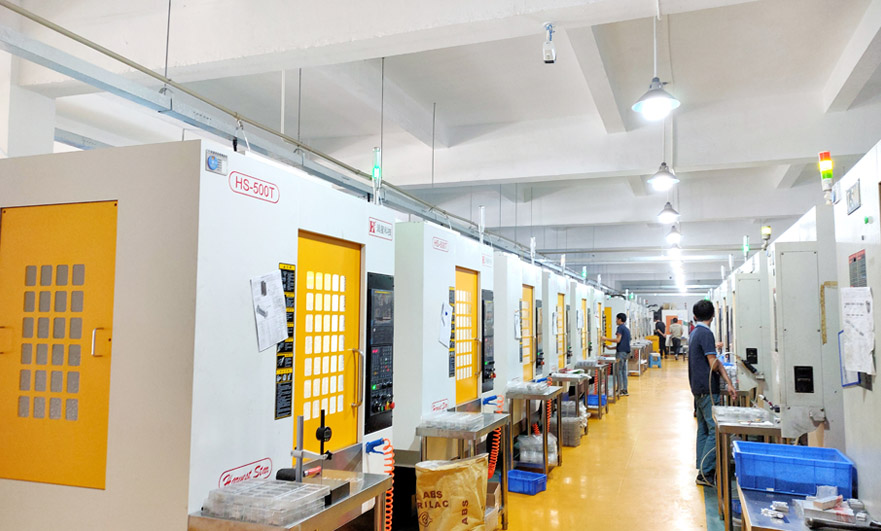
CNC Drilling: CNC drilling focuses specifically on creating holes in the workpiece. It utilizes specialized drill bits or cutting tools to remove material and create precise holes with accurate diameters and depths. CNC drilling machines can automate the process, enabling efficient and consistent hole production in various materials.
CNC Grinding: CNC grinding is used for precision machining of surfaces and features requiring tight tolerances and excellent surface finishes. Grinding machines equipped with abrasive wheels remove material through abrasion, resulting in precise dimensional control and surface quality. This process is commonly used for parts that require fine finishing, such as cylindrical surfaces, threads, and gears.
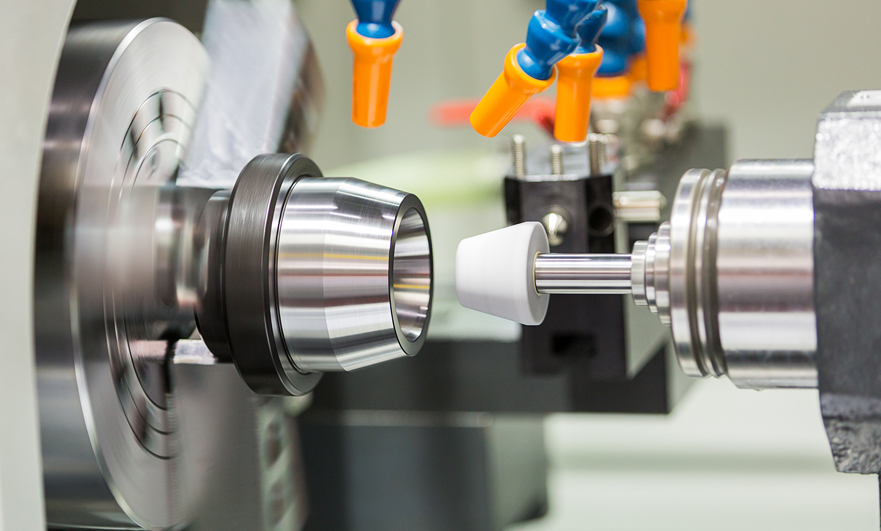
CNC Boring: CNC boring involves enlarging existing holes or creating large-diameter holes in a workpiece with precision and accuracy. Boring machines utilize cutting tools that rotate and move linearly to remove material and achieve the desired hole diameter and depth. This process is commonly used in applications such as creating bores in engine cylinders, gearboxes, or bearing housings.
CNC Sawing: CNC sawing machines utilize a rotating blade with teeth to cut through various materials, including metal, wood, and plastic. These machines can make straight cuts or perform contour cutting to create specific shapes. CNC sawing is often used for cutting bars, tubes, and profiles into desired lengths or specific angles.
CNC EDM (Electrical Discharge Machining): CNC EDM is a non-contact machining process that uses electrical discharges between a tool and a workpiece to remove material. It is commonly used for machining complex shapes, intricate details, and hard materials. CNC EDM can produce high-precision parts with excellent surface finishes, making it suitable for applications such as molds, dies, and aerospace components.
CNC Laser Cutting: CNC laser cutting involves the use of a high-power laser beam to cut through various materials with precision and speed. The laser beam melts or vaporizes the material, resulting in clean and accurate cuts. CNC laser cutting machines are commonly used for sheet metal fabrication, signage, and intricate designs requiring high levels of precision.
Process: Injection molding is a manufacturing process where molten material, typically a thermoplastic polymer, is injected into a mold cavity. The molten material is forced under high pressure into the mold cavity, where it cools and solidifies, taking the shape of the mold.
Application: Injection molding is suitable for producing large quantities of small to medium-sized parts with intricate details. It is commonly used in industries such as automotive, consumer products, electronics, medical devices, and packaging. Parts produced through injection molding include housings, enclosures, caps, connectors, and various components.
Advantages: Injection molding offers several advantages, including high production efficiency, repeatability, tight dimensional tolerances, and excellent surface finishes. It allows for intricate part designs, complex features, and the incorporation of inserts or multiple materials in a single production cycle.
Process: Die casting is a manufacturing process that involves injecting molten metal, such as aluminum, zinc, or magnesium, into a steel mold cavity under high pressure. The molten metal solidifies quickly, and the part is ejected from the mold after cooling.
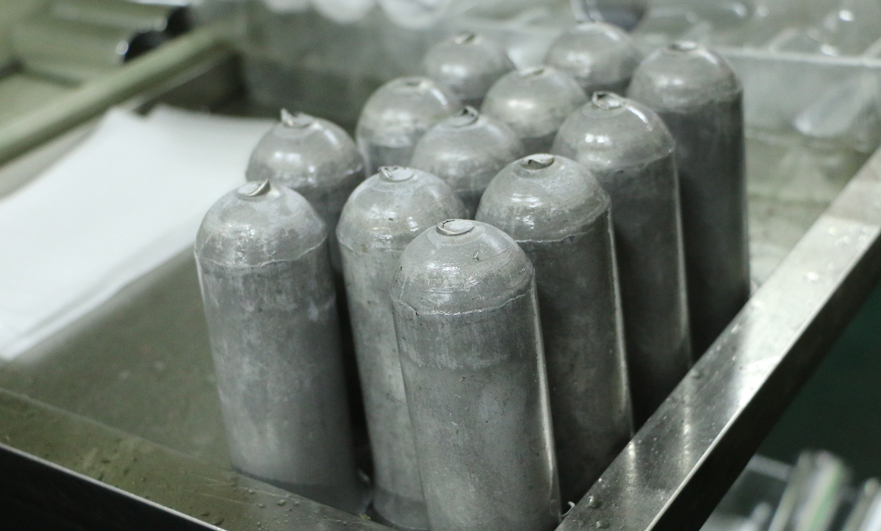
Application: Die casting is commonly used for producing metal parts with high dimensional accuracy, intricate shapes, and thin walls. It finds applications in automotive, aerospace, appliances, hardware, and other industries. Parts produced through die casting include engine components, housing enclosures, brackets, and various structural parts.
Advantages: Die casting offers advantages such as excellent dimensional stability, high production rates, good surface finishes, and the ability to produce complex shapes with thin walls. It provides high material strength, making it suitable for parts requiring structural integrity and durability.
While both injection molding and die casting have their unique advantages, the selection of the appropriate process depends on factors such as the material being used, part complexity, required production volume, cost considerations, and functional requirements of the part. Manufacturers often analyze these factors to determine the most suitable process for their specific application.
These are just a few examples of the many CNC machining processes available. Each process has its own strengths and is suitable for specific applications and materials. Manufacturers often combine multiple CNC machining processes to achieve the desired results for complex parts with intricate geometries.
If you are considering CNC turning, you can view our CNC Turning Services page or contact our CNC Turning Services Project Specialists to learn more about your options for products manufactured through our efficient, high-precision CNC turning process.
